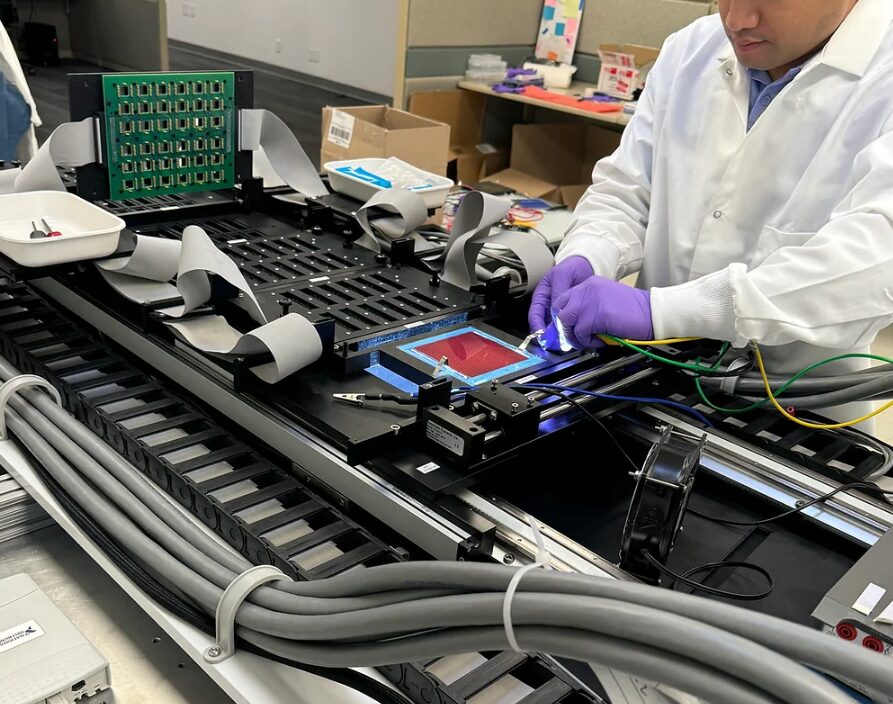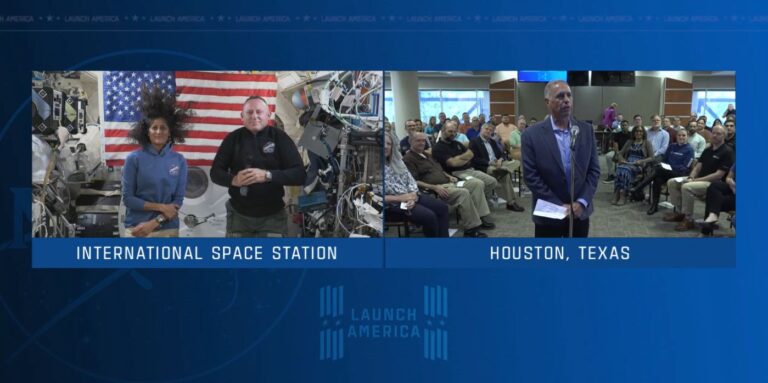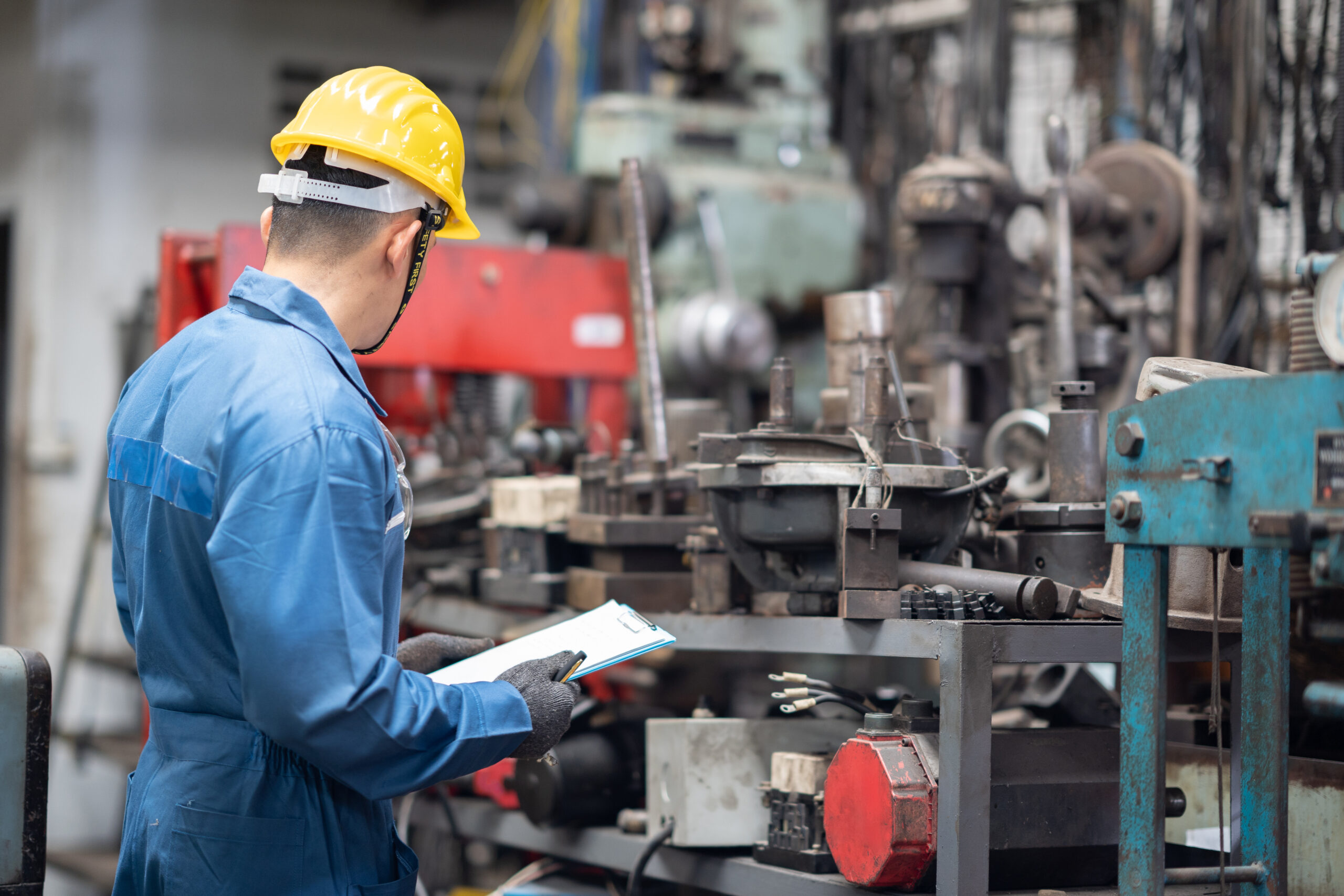Climate & Environment
Climate change proposals must be cost-effective, implementable, technology-neutral, and market-based. These policies must empower manufacturers, maintain our competitiveness in the global market, and continue economic growth. Environmental sustainability is key to the long-term viability of the manufacturing sector.
Manufacturing Minute: Union Pacific’s Big Boy Steam Locomotive Coming to California
This week's Manufacturing Minute brings exciting developments across the manufacturing sector in California from our CMTA members. Manufacturing Minute is powered by Tri Tool Technologies. https://youtu.be/FIaKfyv4oSM Watch the latest episode in the video player...
CMTA Government Relations Update: A Recently Expired California Incentive Program May be Reestablished
This month’s Government Relations Update video highlights crucial legislative developments for California’s manufacturing sector. https://www.youtube.com/watch?v=OOD_nmxABJo The California Legislative Summer Recess is approaching on July 3, 2024. This date marks the...
Organic Fertilizer Company, Glogens, Joins CMTA
Sacramento, Calif. – The California Manufacturers & Technology Association (CMTA) welcomed Glogens, a fertilizer and plant nutrient company, to the organization today. The Sacramento organic fertilizer company utilizes natural coal and amino acids to enhance...
Sustainable House Manufacturer, ReMo Homes, Joins CMTA
Sacramento, Calif. – The California Manufacturers & Technology Association (CMTA) officially welcomed ReMo Homes, a pioneering modular manufacturing company, to the organization today. ReMo Homes is working towards providing zero-carbon, cost-effective modular and...
Manufacturing Minute: Tandem PV Awarded $4.7 Million to Advance New Solar Technology
In this week's Manufacturing Minute, we highlight three significant developments in the manufacturing sector. Manufacturing Minute is powered by Tri Tool Technologies. https://youtu.be/FbUPSHYhM0g U.S. Department of Energy Awards CMTA Member, Tandem PV, with New...
CMTA Government Relations Update: California’s Manufacturers May Lose a Major Training Program
This month’s Government Relations Update video highlights crucial legislative developments for California’s manufacturing sector. https://youtu.be/Dmj-DjtEur0 Both the Assembly and Senate have a huge deadline on Friday, May 24, 2024, to pass bills introduced in their...
Silicon Valley Solar Startup Tandem PV Joins CMTA
Sacramento, Calif. – The California Manufacturers & Technology Association (CMTA) welcomed Tandem PV, an innovative solar energy startup, to the organization today. The Silicon Valley startup is leading the charge to develop and commercialize a more powerful and...
Op-Ed: Statewide water supply target supports California’s manufacturers
OPINION – Water use in California is typically thought of in three parts: water for the environment (50%), water for agriculture (40%), and water for communities (10%) per the Public Policy Institute of California (PPIC). As a result, “ag” is the sector of the economy...
Government Relations Update: Two Bills That Could Impact California Manufacturers
This month's Government Relations Update video delves into crucial legislative developments impacting California's manufacturing sector. California legislation's fiscal deadline is April 26th. All bills with a fiscal impact are due for consideration by the...
Manufacturing Minute: Bloom Energy Awarded $75 Million for Fremont Facility Expansion
This week's Manufacturing Minute brings insightful updates shaping the future of the U.S. manufacturing landscape. https://youtu.be/tu5qxAgHpco A joint study by Deloitte and the Manufacturing Institute gives the industry insight into the growth of manufacturers. The...
Press Releases


Manufacturing Minute: Union Pacific’s Big Boy Steam Locomotive Coming to California
This week’s Manufacturing Minute brings exciting developments across the manufacturing sector in California from our CMTA members. Manufacturing Minute is powered by Tri Tool Technologies.
Union Pacific’s Big Boy No. 4014 is Coming to California


Union Pacific Big Boy No. 4014 |Courtesy of Union Pacific
First, CMTA board member Union Pacific’s Big Boy No. 4014, the world’s largest steam locomotive, will be on display in Roseville on July 12-13 from 9 a.m. to 3 p.m. This event, part of Union Pacific’s “Big Boy Westward Bound” tour, honors the rich legacy of Union Pacific while celebrating its employees and the communities it serves. The City of Roseville is enhancing the event with additional activities at Vernon Street Town Square on Saturday from 9 a.m. to 4 p.m., alongside a special exhibit at the Carnegie Museum in Old Town Roseville.
This historic locomotive, initially delivered in 1941 and retired in 1961 after traveling over a million miles, was restored in 2019 and is a testament to Union Pacific’s storied history and commitment to preservation.
PepsiCo Expands EV Fleet Across California


Tesla Class 8 Semi-Truck | Courtesy of PepsiCo
Next, PepsiCo Beverages North America (PBNA), CMTA’s newest member, is making significant strides in sustainable transportation by expanding its electric-powered fleet in California. The deployment of fifty Class 8 Tesla semi-trucks and seventy-five Ford E-Transit electric vans will revolutionize PBNA’s logistics operations. This initiative aligns with PepsiCo’s ambitious pep+ goal to achieve net zero emissions by 2040. This project is a part of California Climate Investments, supported by grants from the California Air Resources Board, the San Joaquin Valley Air Pollution Control District, and the California Energy Commission.
PepsiCo’s Fresno facility, a 170,000-square-foot manufacturing plant, is now equipped with advanced Tesla chargers and Megapack Battery Energy Storage Systems to support these new electric vehicles, marking a substantial step towards a greener future.
Stay up to date with all manufacturing news by following CMTA on social media.
CMTA Government Relations Update: A Recently Expired California Incentive Program May be Reestablished
This month’s Government Relations Update video highlights crucial legislative developments for California’s manufacturing sector.
The California Legislative Summer Recess is approaching on July 3, 2024. This date marks the deadline for policy committees to meet and report bills, after which the State Legislature will take a break and reconvene on August 5, 2024.
AB 2922 (Garcia), a CMTA Maker Bill, is aimed at revitalizing the recently expired Capital Investment Incentive Program. If successful, this bill will extend the program until January 1, 2035, providing financial incentives to attract qualified manufacturers to California. AB 2922 promotes economic growth, job creation, and regional development by allowing counties and cities to offer tax benefits to manufacturers with significant capital investments. This bill has been referred to the Senate Local Government Committee and represents a substantial opportunity for the state’s manufacturing sector to continue to thrive.
Learn more about CMTA’s bills here.
Do you want to get exclusive government relations insights from CMTA? 📲 Reach out to members@cmta.net.


Organic Fertilizer Company, Glogens, Joins CMTA
Sacramento, Calif. – The California Manufacturers & Technology Association (CMTA) welcomed Glogens, a fertilizer and plant nutrient company, to the organization today.
The Sacramento organic fertilizer company utilizes natural coal and amino acids to enhance farmers crops by delivering essential elements to plants.
“From fresh fruit and vegetables to grapes that produce world-class wine, California’s over 25.6 million acres of agricultural land feeds the country. We are excited to bring on Glogens to CMTA as we support our farmers, and many of our agriculture manufacturing members,” said Lance Hastings, CEO & President of CMTA.
Glogens products are based on years of research and development that led to the patent of an exclusive technology in the U.S. with the goal of helping farmers grow healthier crops and increase their yield while lowering costs. Glogens is also working on gaining patents in other countries to benefit the world’s overall agriculture industry.
“Glogens® proudly joins CMTA as a member, anticipating a transformative impact on the agricultural industry. We are confident that our regenerative patented fertilizer will reform the agriculture sector, enhancing soil quality, promoting sustainability, and yielding healthier crops,” said Natasha Tkachuk, Glogens’ Vice President – Operations Manager. “Glogens® is committed to ensuring affordability for farmers and consumers while focusing on environmental consciousness. The company envisions introducing its nutrient-rich fertilizer to farmers to reshape the perception of coal as a valuable and beneficial resource.”
Glogen’s unique production of fertilizers enhances the natural functioning of plants. Its fertilizers are patented to increase crop yield and plant health without synthetic chemicals.
###
About CMTA
The California Manufacturers & Technology Association has advocated for pro-growth laws and regulations before the California legislature and administrative agencies since 1918. The total output from manufacturing in California is $300 billion per year, roughly 10 percent of the total economic output of the state. Manufacturers employ 1.3 million Californians paying wages more than $25,000 higher than other non-farm employers in the state. For more information, visit CMTA’s website.
About Glogens
Welcome to Glogens®, where innovation meets sustainability. As pioneers in regenerative agriculture organic solutions, we’re dedicated to crafting high-quality products that enrich lives and nurture our planet. Our commitment to environmental sustainability is woven into every aspect of our work, ensuring that each product reflects our passion for a greener, cleaner, healthier future.
Beyond excellence, we’re dedicated to fostering a local community and building connections that empower and support each other. Join us in our journey towards affordable, reliable, locally sourced eco-conscious solutions that make a difference. For more information, visit Glogens® website.


Sustainable House Manufacturer, ReMo Homes, Joins CMTA
Sacramento, Calif. – The California Manufacturers & Technology Association (CMTA) officially welcomed ReMo Homes, a pioneering modular manufacturing company, to the organization today.
ReMo Homes is working towards providing zero-carbon, cost-effective modular and manufactured homes in under-resourced and historically underrepresented communities using advanced manufacturing technologies.
“In California’s efforts to decrease the state’s carbon footprint, sustainable housing manufacturing will play an important role within the state,” said Lance Hastings, CEO & President of CMTA. “CMTA is thrilled to welcome ReMo Homes as a member and we’re looking forward to partnering with their team as California continues to transition towards a more sustainable future.”
ReMo’s sustainable housing manufacturing is foreseen to create eco-friendly housing that will also facilitate the creation of cost-effective housing and industry jobs within the state.
“We are thrilled to join CMTA and be a part of the leading voice of California’s manufacturing industry,” said Vamsi Kumar Kotla, Founder of ReMo Homes. “This partnership aligns perfectly with our mission to industrialize construction and promote sustainable, affordable housing solutions, while generating high road jobs through advanced manufacturing. We look forward to learning from and collaborating with industry leaders to drive positive change and growth in the industry.”


CMTA’s new member is currently pursuing the setting up of a manufacturing cluster for building net-zero homes in California’s Inland Empire region.
###
About CMTA
The California Manufacturers & Technology Association has advocated for pro-growth laws and regulations before the California legislature and administrative agencies since 1918. The total output from manufacturing in California is $300 billion per year, roughly 10 percent of the total economic output of the state. Manufacturers employ 1.3 million Californians paying wages more than $25,000 higher than other non-farm employers in the state. For more information, visit CMTA’s website.
About ReMo Homes
ReMo Homes is a pioneering modular manufacturing company committed to addressing the housing and climate crises through innovative and advanced manufacturing techniques. ReMo’s multidisciplinary team consists of veterans from SpaceX, NASA as well as from traditional construction companies. ReMo specializes in producing zero-carbon, economical homes utilizing cutting-edge fabrication methods, automation-friendly materials, and Lean Manufacturing principles gleaned from the automotive industry. ReMo is dedicated to revolutionizing the housing industry by making sustainable living accessible to everyone. For more information, visit ReMo Homes website.
Manufacturing Minute: Tandem PV Awarded $4.7 Million to Advance New Solar Technology
In this week’s Manufacturing Minute, we highlight three significant developments in the manufacturing sector. Manufacturing Minute is powered by Tri Tool Technologies.
U.S. Department of Energy Awards CMTA Member, Tandem PV, with New Funding


Courtesy of Tandem PV
CMTA member Tandem PV, a leader in perovskite solar technology, has been awarded $4.7 million by the U.S. Department of Energy’s Solar Energy Technologies Office (SETO). This funding will support the commercialization of Tandem PV’s innovative thin-film solar photovoltaic technology. Combining conventional silicon solar cells with perovskite materials allows Tandem PV panels to achieve up to 40% more power than traditional panels. The Silicon Valley company is currently producing panels with 26% efficiency. The company’s technology promises to lower installation and land acquisition costs, making solar energy more affordable and efficient for consumers.
CMTA Board Member, Boeing’s, Huge Milestone


Courtesy of Boeing
First, CMTA board member company, Boeing, successfully launched its first crewed flight test of the Starliner mission, marking a decade-long milestone. Veteran NASA astronauts Butch Wilmore and Suni Williams embarked on this mission, riding the Starliner capsule to the International Space Station (ISS) on June 5, 2024. After separating from its rocket stages, the spacecraft entered orbit and began its 24-hour journey to the ISS. This mission is essential as it works towards NASA’s certification of the Starliner for routine astronaut missions.
2024 MakingCA Conference Call for Speakers


2023 MakingCA Conference Keynote Speaker Eric Edelson, Fireclay Tile
We are excited to announce that CMTA is seeking speakers and panelists for the 2nd Annual MakingCA Conference in October. Following the success of last year’s inaugural event, which attracted nearly 150 business leaders, manufacturing employees, advocates, and partners, this year’s conference promises to be even more impactful. Interested individuals can apply by filling out the form here, with a submission deadline of August 20, 2024. The conference also features the recognition of the “Coolest Thing Made in California” competition winner. Selected speakers will receive complimentary registration and extensive promotion across CMTA’s platforms.
Learn more about our upcoming MakingCA Conference here.
CMTA Government Relations Update: California’s Manufacturers May Lose a Major Training Program
This month’s Government Relations Update video highlights crucial legislative developments for California’s manufacturing sector.
Both the Assembly and Senate have a huge deadline on Friday, May 24, 2024, to pass bills introduced in their house of origin. In the days leading up to this deadline, both houses are intensively reviewing and voting on various bills. This legislative activity is critical for manufacturers to monitor, as the outcomes will shape the regulatory and operational landscape for the sector.
A significant point of concern for California’s manufacturing industry is Senate Bill 1321, spearheaded by Senator Aisha Wahab. This bill proposes an overhaul of the Employment Training Panel (ETP), which has been instrumental in providing workforce development funding. The ETP has allocated over $26.7 million, benefiting more than 37,000 employees in the manufacturing sector. However, the proposed changes threaten to dismantle this vital program, jeopardizing sustainable jobs and career pathways. The California Manufacturers & Technology Association (CMTA) identifies this bill as a Manufacturing Breaker Bill as it is a potential disruptor to the stability and growth of the industry.
Another concerning bill for California’s manufacturers is Assembly Bill 2083, led by Assemblymember Marc Berman, which mandates the California Energy Commission to assess the feasibility of reducing greenhouse gas emissions from industrial heat applications by 85% below 1990 levels by 2045. While the bill aims for significant environmental advancements, its current form is flawed due to its narrow focus on zero-emission and electrified equipment, excluding more cost-effective and technologically viable alternatives like hydrogen fuel and carbon capture. AB 2083 is an attempt to force the California industry away from natural gas in a manner that is not cost-effective or technologically possible at this time. Cost is even more concerning given that the legislature is considering eliminating R&D tax credits and minimizing the Net operating losses for businesses as part of the budget due to California’s most recent updated budget announcement. CMTA identifies AB 2083 as a Manufacturing Breaker Bill.
Do you want to get exclusive government relations insights from CMTA? 📲 Reach out to members@cmta.net.


Silicon Valley Solar Startup Tandem PV Joins CMTA
Sacramento, Calif. – The California Manufacturers & Technology Association (CMTA) welcomed Tandem PV, an innovative solar energy startup, to the organization today.
The Silicon Valley startup is leading the charge to develop and commercialize a more powerful and affordable solar panel using perovskite technology, which many have described as the future of solar energy.
“Adding new technologies and capabilities that enhance California’s reliable and affordable energy objectives is a key component to meeting the needs of the future,” said CMTA’s CEO & President Lance Hastings. “CMTA is excited to welcome Tandem PV to the organization and help them grow their manufacturing facility in California.”
Perovskite is a synthetic crystalline material that is sensitive to wavelengths of light that conventional solar panels do not efficiently convert to electricity. Tandem PV’s co-founder Colin Bailie developed the first perovskite-silicon tandem solar cell at Stanford University in 2013. The company’s perovskite-based solar panels are 25% more efficient than the average silicon solar panel. More powerful and affordable solar energy will help the world expeditiously attain its renewable energy goals.
“We are excited to join CMTA, which has a singular focus on helping California manufacturers like Tandem PV,” said Tandem PV CEO Scott Wharton. “It has great relationships with state and local government officials and expertise about how to access myriad government sources that can support our work as a small manufacturer and help us thrive as a climate tech leader in the state.”
Tandem PV secured an additional $6 million at the beginning of 2024 to further its R&D with plans for its first manufacturing facility. It has received support from the U.S. Dept. of Energy and the California Energy Commission.
###
About CMTA
The California Manufacturers & Technology Association has advocated for pro-growth laws and regulations before the California legislature and administrative agencies since 1918. The total output from manufacturing in California is $300 billion per year, roughly 10 percent of the total economic output of the state. Manufacturers employ 1.3 million Californians paying wages more than $25,000 higher than other non-farm employers in the state. For more information, visit CMTA’s website.
About Tandem PV
Tandem PV, based in Silicon Valley and founded in 2016, is driving the transition to a net-zero economy by developing state-of-the-art perovskite-based solar panels. The company is committed to the production of highly efficient and durable solar technology suited for broad-scale deployment. Its co-founder and CTO, Colin Bailie, developed the first perovskite-silicon tandem solar cell at Stanford University and launched the company through Cyclotron Road, the U.S. Dept. of Energy startup accelerator supporting innovations with potential for global commercial impact. Tandem PV has raised a total of $28 million in venture capital and government funds including from the DOE, the National Science Foundation, and the California Energy Commission. For more information, visit Tandem PV’s website.
Op-Ed: Statewide water supply target supports California’s manufacturers
OPINION – Water use in California is typically thought of in three parts: water for the environment (50%), water for agriculture (40%), and water for communities (10%) per the Public Policy Institute of California (PPIC). As a result, “ag” is the sector of the economy that comes to mind first when we talk about the state’s water supply. But the rest of California’s economy also requires water.
California’s manufacturers – one of the state’s largest industry sectors, accounting for 11.8% of state GDP – need water. Manufacturers use water for many processes, including fabrication, processing, washing, diluting, cooling, and transporting goods. Water is also a key component of products themselves, such as in the production of food, paper, and chemicals, and in petroleum refinement. “On an elementary level,” explains the company Jenco, a manufacturer of water quality meters, “the process of refining and producing raw materials… demands water.”
Manufacturers prioritize conserving water, and many facilities use “smart” meters and monitoring systems to find and plug leaks, and to make their systems more efficient overall. Technologies to reuse and recycle water are advancing and expanding. Since 2005, most factories have reduced water use by 12% or, since 1970, by 33%.
That trend mirrors the conservation efforts of Californians, too, who altogether use “roughly the same amount of water” today as we did in the late 1980s, “despite growing by more than 10 million residents,” per PPIC.
However, conservation is California’s only recent progress toward sustaining its water supply. Since the 70s and 80s, which saw the last major improvements to the state’s water infrastructure, policymakers’ approach to water management has been based increasingly on conservation, rather than expanding storage to meet the demands of the future.
As a statewide matter, “it is not enough to rely solely on conservation to meet demand,” the PPIC says. As California’s climate grows more unpredictable and volatile, “communities that have already attained low levels of per-capita water use… have less flexibility to further reduce water use,” leaving them more vulnerable to periods of drought.
The same logic applies to the state’s manufacturers. Having already reduced water use, a supply strategy predicated on conservation alone will prove increasingly untenable. A person or a facility can only conserve so much water; each requires a minimum amount to function.
During drought conditions, that minimum amount is often unavailable. For communities, that means trucking in water and other emergency measures. For manufacturers, it means “reduc[ing] manufacturing productivity” or even temporarily closing key facilities, according to Drought.gov—consequences which carry significant, negative economic impacts.
Manufacturing is considered the “gold standard” for jobs – says the state assembly’s Committee on Jobs, Economic Development, and the Economy – “because of the higher wages paid to workers, the inclusion of small businesses within its extended supply chains, and the high multiplier effect on their local communities and across the state.” The Milken Institute estimates that for every job created in manufacturing, 2.5 jobs are created in other sectors. Therefore, for every manufacturing job lost, many others are threatened, too.
For this and many other “downstream” reasons, California’s water supply itself – not just efforts to conserve that supply – must improve.
SB 366 (Caballero) offers a transformative starting point: a statewide water supply target that ensures sustainability for cities and towns, agriculture, other industries, and the environment. The bill would establish long-term water supply targets for the state to achieve by specific deadlines, and require that state agencies develop plans and milestones to achieve those targets. This work would be done in cooperation with water agencies, wastewater service providers, and other stakeholders.
Statewide target-setting has been done in other sectors. In transportation, all new cars sold in California should be zero-emission vehicles by 2035. In energy, the state is scheduled to use 100% clean electricity by 2045. And in housing, the state shall build 2.5 million new housing units by 2030. Why not an overall target for water?
Without a necessary target, our water supply – for the environment, communities, manufacturers, and others – will be increasingly in peril.
-This OpEd was written by Lance Hastings, CEO & President of CMTA, and was first published in Capitol Weekly on April 29, 2024.
Government Relations Update: Two Bills That Could Impact California Manufacturers
This month’s Government Relations Update video delves into crucial legislative developments impacting California’s manufacturing sector.
California legislation’s fiscal deadline is April 26th. All bills with a fiscal impact are due for consideration by the Appropriations Committees, signaling a critical phase for proposed policies.
Assemblymember Luiz Rivas’s AB 2400 takes center stage, proposing an extension of the California Alternative Energy and Advanced Transportation Financing Authority Act (CAEATFA). This act, fostering partnerships to offer financing solutions, aims to slash greenhouse gas emissions and energize economic growth. Since the act’s establishment in 2010, the sales and use tax exclusion incentive program within CAEATFA for manufacturers of green technologies identifies a nexus between California’s economic and environmental goals. Since its inception, over 128,000 jobs have been created or retained, spurring investment that totals over $2.5 billion in fiscal benefits and $415 million in environmental benefits. AB 2400, a CMTA maker bill, stands to profoundly benefit California’s manufacturers.
Assemblymember Diane Papan’s AB 2515 raises pivotal concerns for menstrual product manufacturers in California. The bill seeks to prohibit the sale of products containing any detectable PFAS, potentially exposing manufacturers to extensive liabilities and punitive penalties. While CMTA’s members are not intentionally adding PFAS chemicals to these products, the bill contains a private right of action and the ability to levy punitive financial penalties on manufacturers. Companies should not intentionally add these chemicals, but the legislation needs additional considerations before CMTA removes its opposition.
Stay informed with the latest updates from the Government Relations Update video series, offering invaluable insights for manufacturers navigating California’s legislative environment.
Do you want to get exclusive government relations insights from CMTA?
📲 Reach out to members@cmta.net.
Manufacturing Minute: Bloom Energy Awarded $75 Million for Fremont Facility Expansion
This week’s Manufacturing Minute brings insightful updates shaping the future of the U.S. manufacturing landscape.
A joint study by Deloitte and the Manufacturing Institute gives the industry insight into the growth of manufacturers. The study estimates a demand for approximately 3.8 million skilled workers over the next decade. The study showcases the urgent need to cultivate a national talent pipeline, emphasizing roles such as statisticians, engineers, software developers, and industrial maintenance technicians. As manufacturing continues to thrive post-pandemic, investing in workforce development remains a priority for manufacturers to sustain the momentum.


Bloom Energy secures $75 million in federal tax credits for its Fremont manufacturing plant. The Bay Area manufacturer was recognized for its dedication to expanding domestic manufacturing and fuel cell production capacity. The funding awarded to Bloom Energy is a part of the White House’s $4 billion initiative, which aims to accelerate clean energy manufacturing and reduce greenhouse gas emissions. With a focus on operational efficiency and stack capacity expansion, Bloom’s CEO, KR Sridhar, expresses optimism about the company’s growth.


California Aerospace Day 2022
Mark your calendars for the celebration of California’s aerospace industry at California Aerospace Day, hosted by The Boeing Company and Lockheed Martin on June 5, 2024. The event promises a day filled with insightful panels on STEM/workforce development, Climate Change Technologies, and topics regarding innovation in the aerospace industry. Don’t miss this opportunity to engage with industry leaders and explore the exciting advancements shaping the future of aerospace in California.
Register for FREE at CaliforniaAerospaceDay.eventbrite.com.